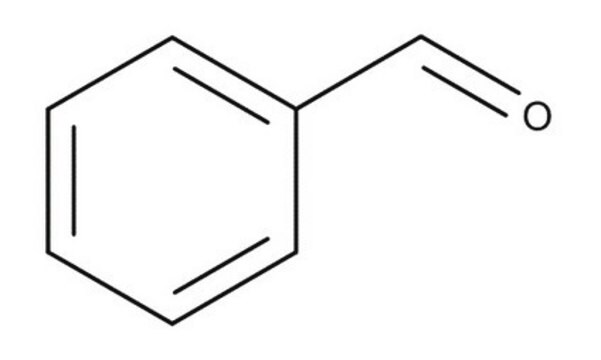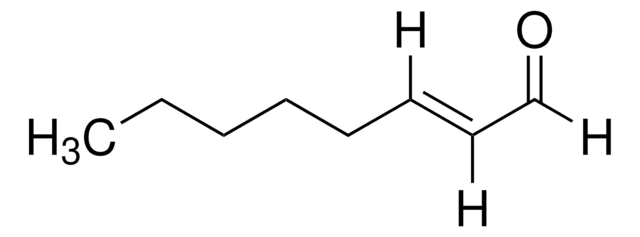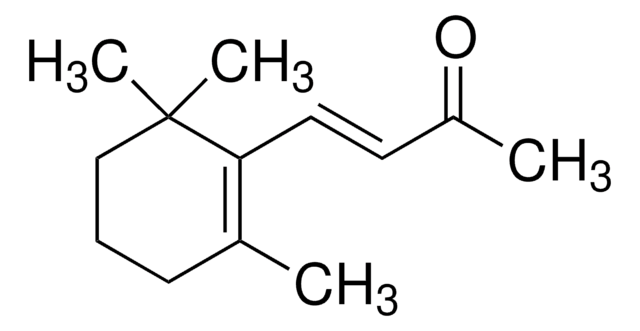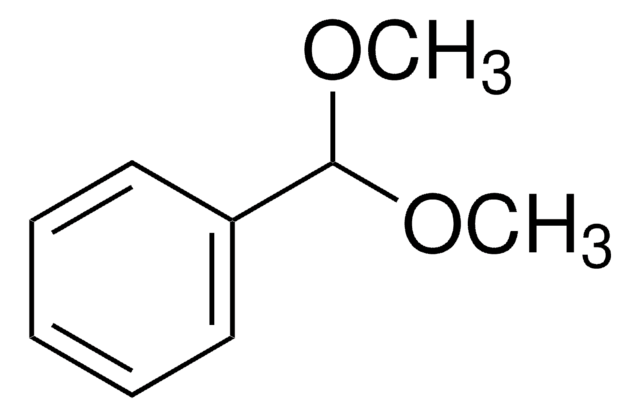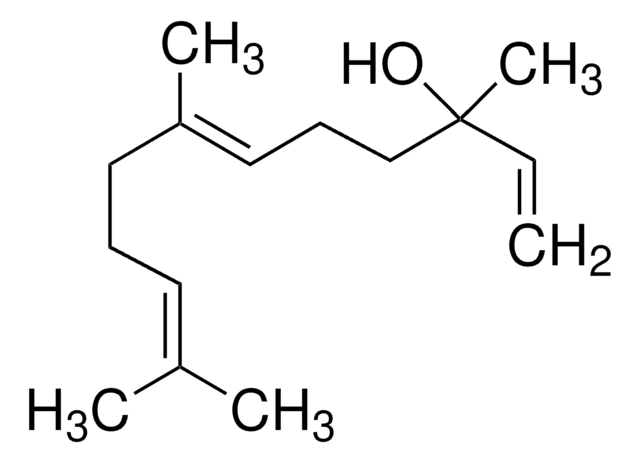W212709
Benzaldehyde
≥98%, FG, FCC
Sinonimo/i:
Bitter almond
About This Item
Prodotti consigliati
Origine biologica
synthetic
Livello qualitativo
Grado
FG
Halal
Kosher
agenzia
meets purity specifications of JECFA
Conformità normativa
EU Regulation 1334/2008 & 178/2002
FCC
FDA 21 CFR 117
FDA 21 CFR 182.60
Densità del vapore
3.65 (vs air)
3.7 (vs air)
Tensione di vapore
4 mmHg ( 45 °C)
Saggio
≥98%
Stato
liquid
Temp. autoaccensione
374 °F
Limite di esplosione
1.4 %, 20 °F
Indice di rifrazione
n20/D 1.545 (lit.)
pH
5.9 (20 °C)
P. ebollizione
178-179 °C (lit.)
Punto di fusione
−26 °C (lit.)
Densità
1.044 g/cm3 at 20 °C (lit.)
applicazioni
flavors and fragrances
Documentazione
see Safety & Documentation for available documents
Allergene alimentare
no known allergens
Organolettico
almond; cherry; sweet
Stringa SMILE
O=Cc1ccccc1
InChI
1S/C7H6O/c8-6-7-4-2-1-3-5-7/h1-6H
HUMNYLRZRPPJDN-UHFFFAOYSA-N
Cerchi prodotti simili? Visita Guida al confronto tra prodotti
Categorie correlate
Descrizione generale
Applicazioni
- Volatolomics-assisted characterization of the key odorants in green off-flavor black tea and their dynamic changes during processing.: This study highlights the role of Benzaldehyde in identifying and characterizing key odorants in green off-flavor black tea, using advanced volatolomics techniques. This research provides essential insights into flavor science and the impact of processing methods on tea quality (Yang et al., 2024).
- Volatilome and flavor analyses based on e-nose combined with HS-GC-MS provide new insights into ploidy germplasm diversity in Platostoma palustre.: This research uses Benzaldehyde as a standard in electronic nose and gas chromatography-mass spectrometry analyses to explore plant volatilomes, significantly contributing to our understanding of plant biochemistry and genetic diversity (Zhong et al., 2024).
Avvertenze
Danger
Indicazioni di pericolo
Classi di pericolo
Acute Tox. 4 Inhalation - Acute Tox. 4 Oral - Aquatic Chronic 2 - Eye Irrit. 2 - Repr. 1B - Skin Irrit. 2 - STOT SE 3
Organi bersaglio
Respiratory system
Codice della classe di stoccaggio
6.1C - Combustible acute toxic Cat.3 / toxic compounds or compounds which causing chronic effects
Classe di pericolosità dell'acqua (WGK)
WGK 1
Punto d’infiammabilità (°F)
145.4 °F - closed cup
Punto d’infiammabilità (°C)
63 °C - closed cup
Dispositivi di protezione individuale
Eyeshields, Faceshields, Gloves, type ABEK (EN14387) respirator filter
Scegli una delle versioni più recenti:
Possiedi già questo prodotto?
I documenti relativi ai prodotti acquistati recentemente sono disponibili nell’Archivio dei documenti.
I clienti hanno visto anche
Il team dei nostri ricercatori vanta grande esperienza in tutte le aree della ricerca quali Life Science, scienza dei materiali, sintesi chimica, cromatografia, discipline analitiche, ecc..
Contatta l'Assistenza Tecnica.
